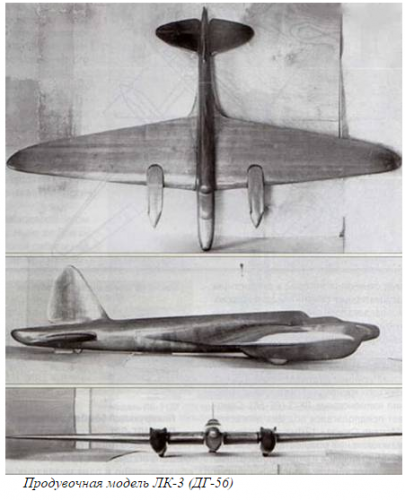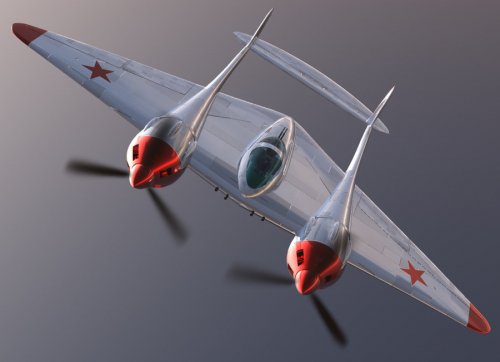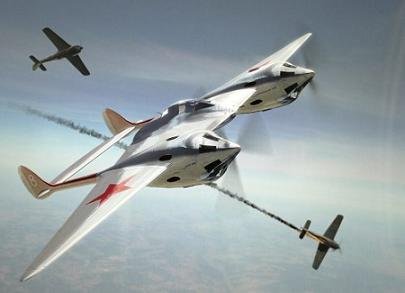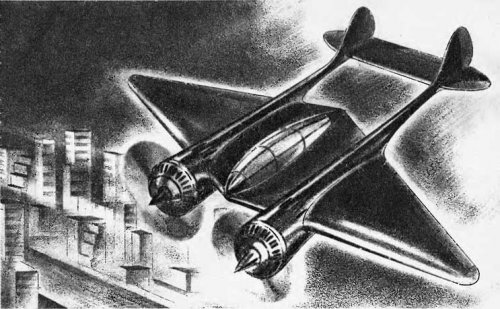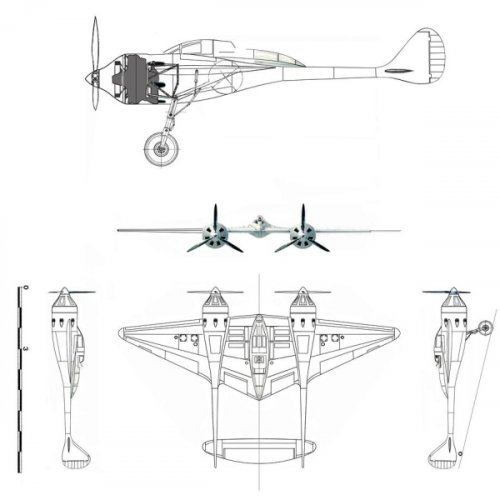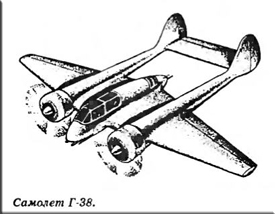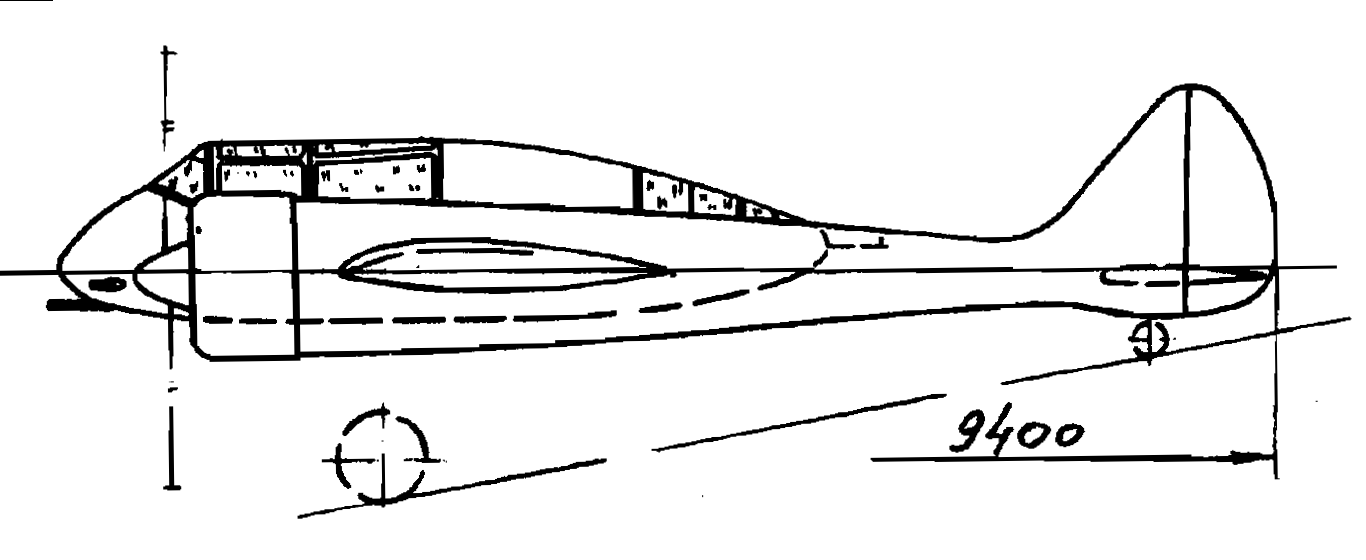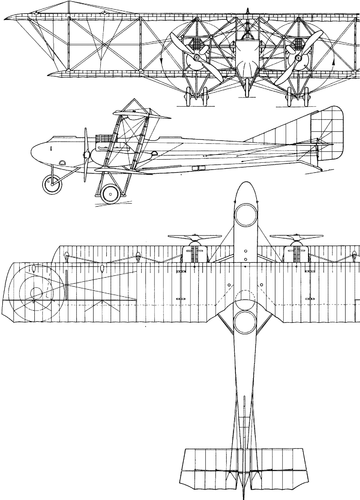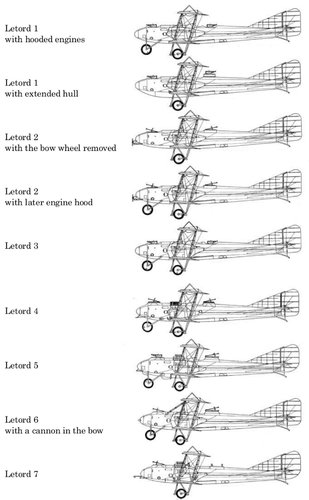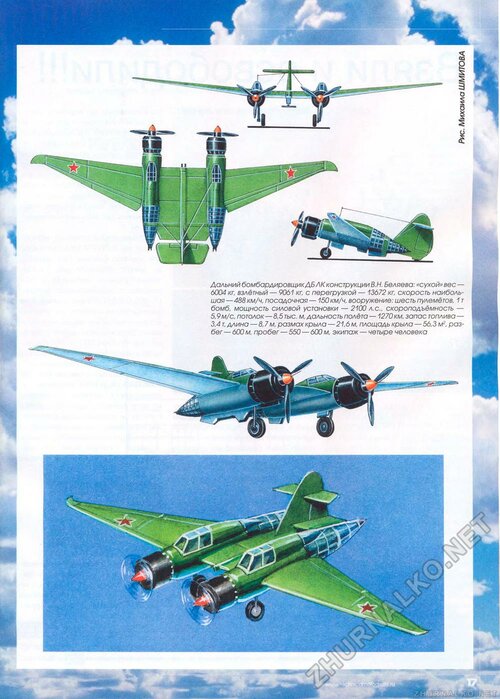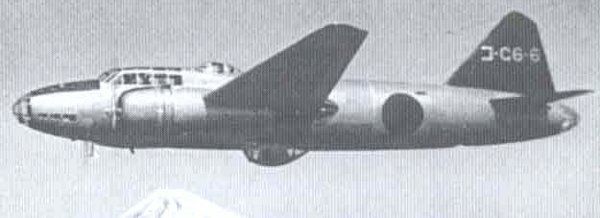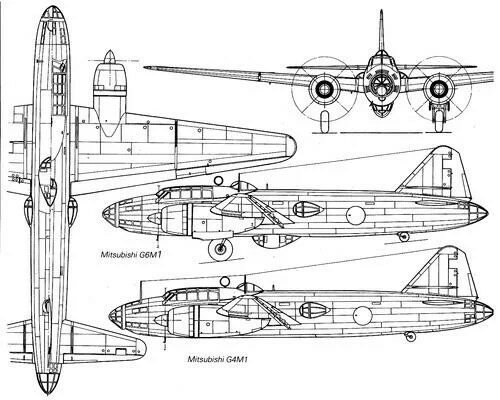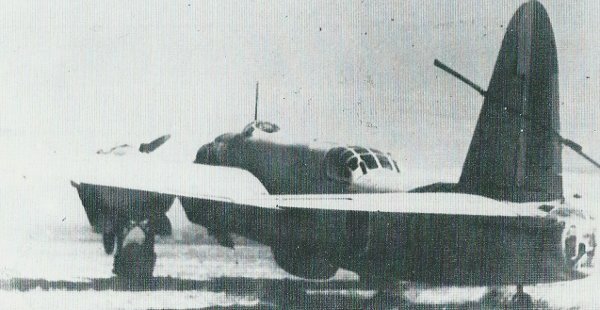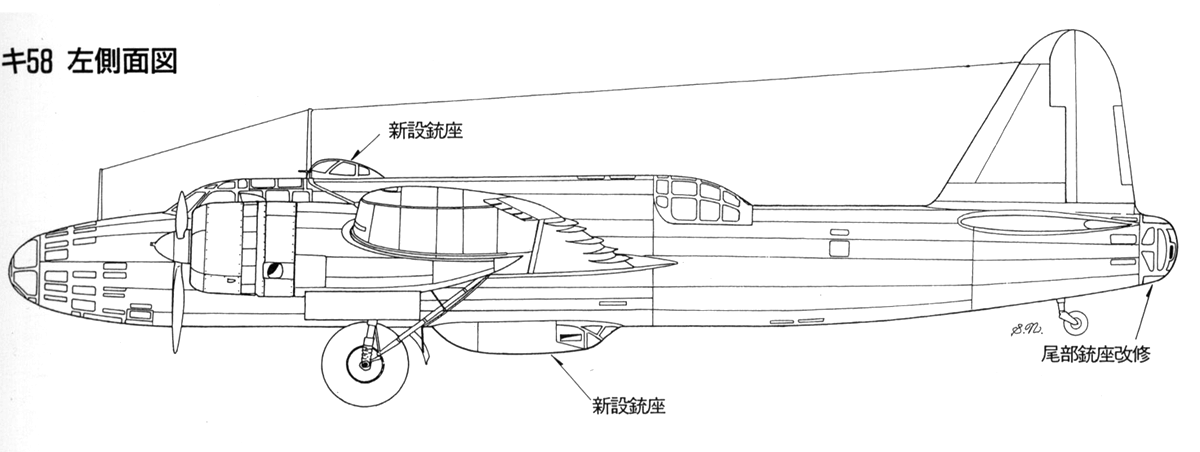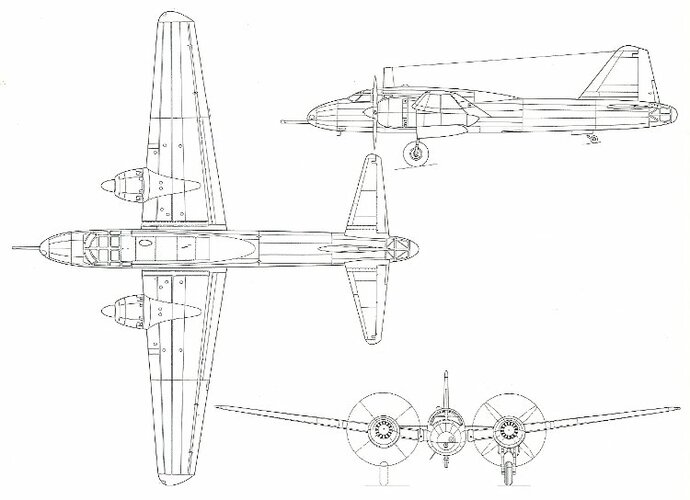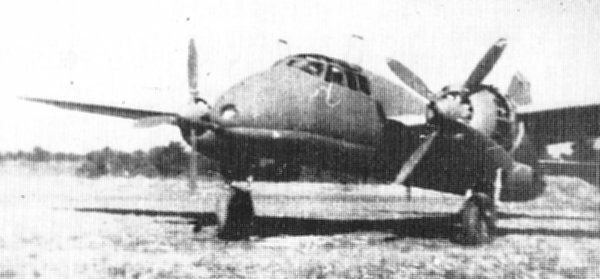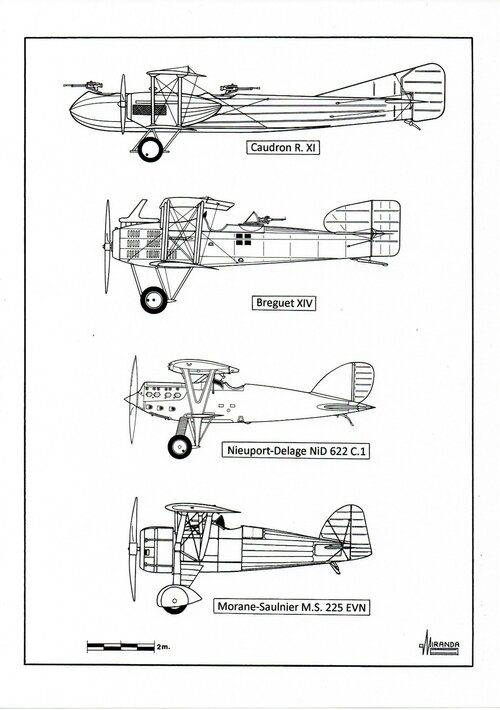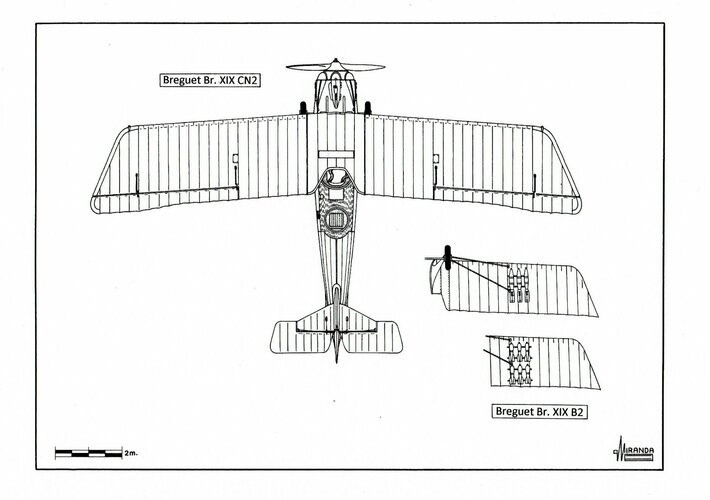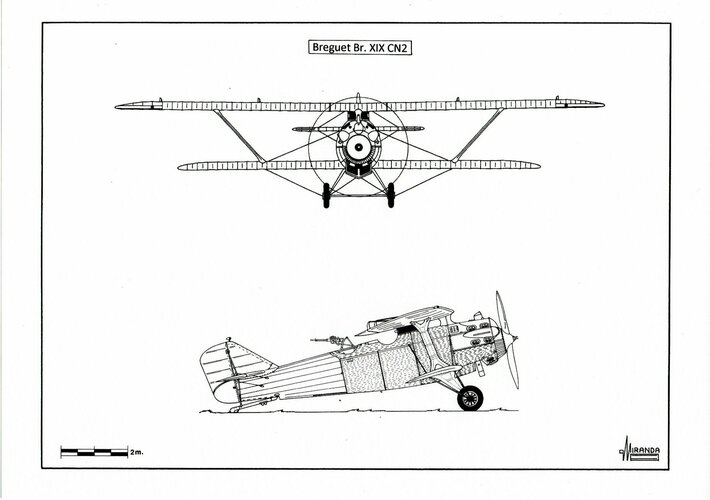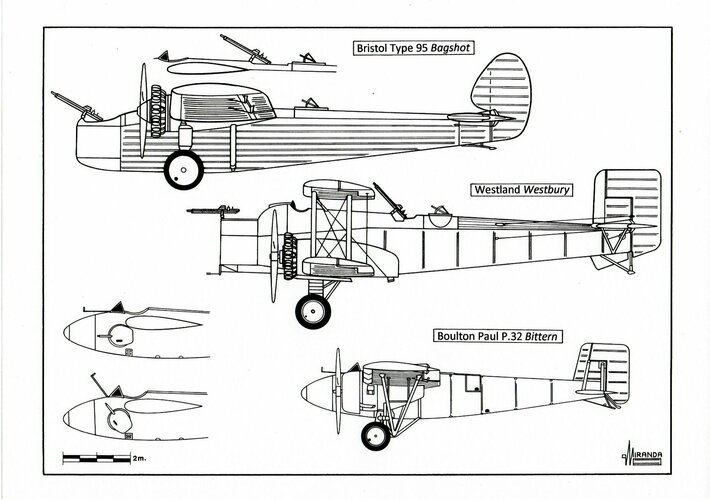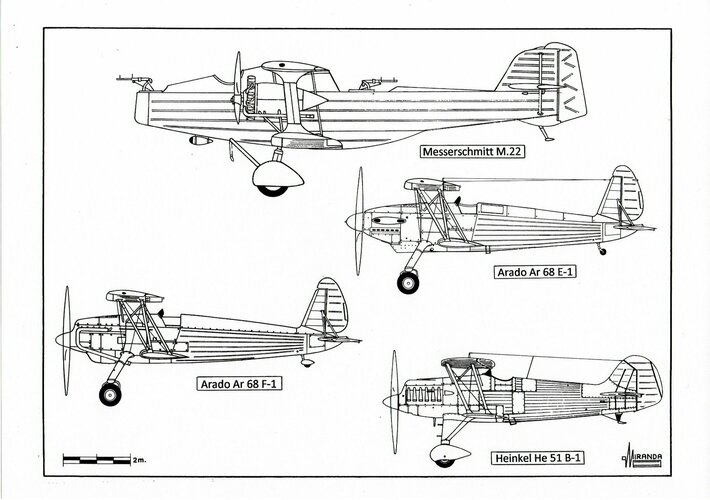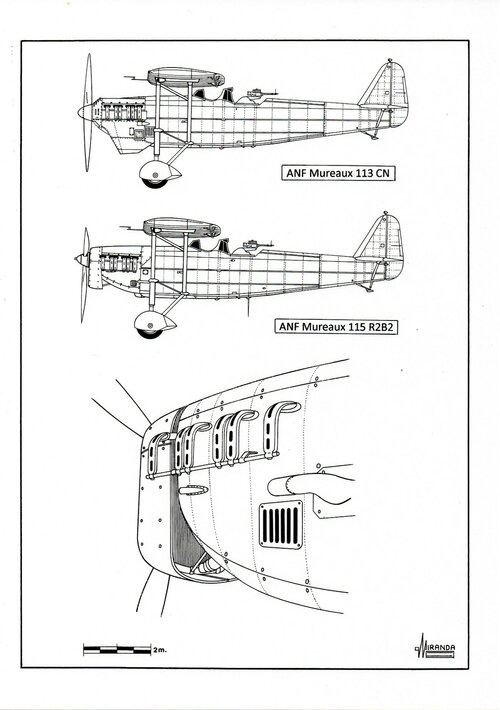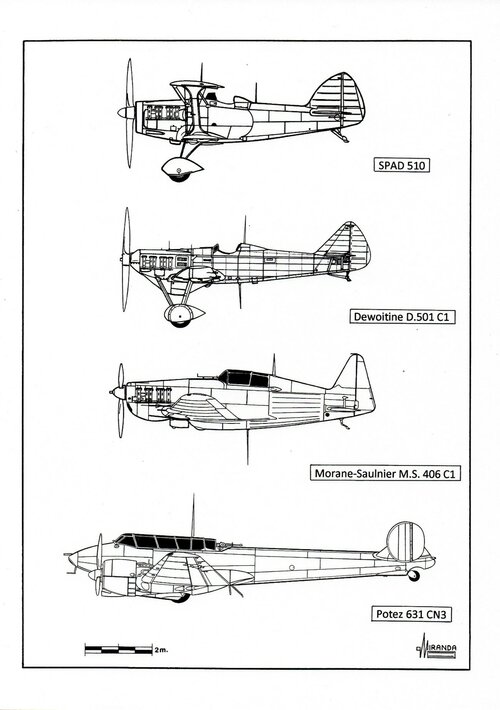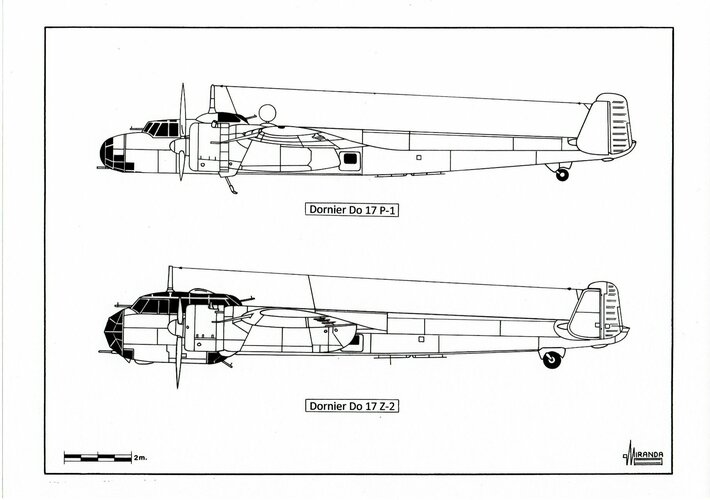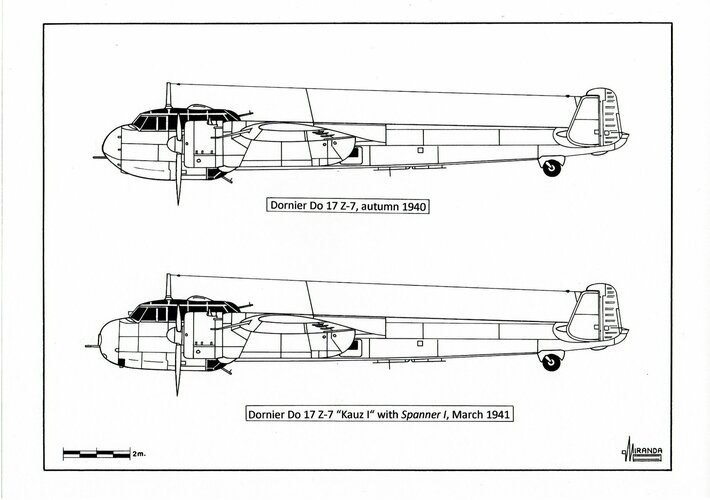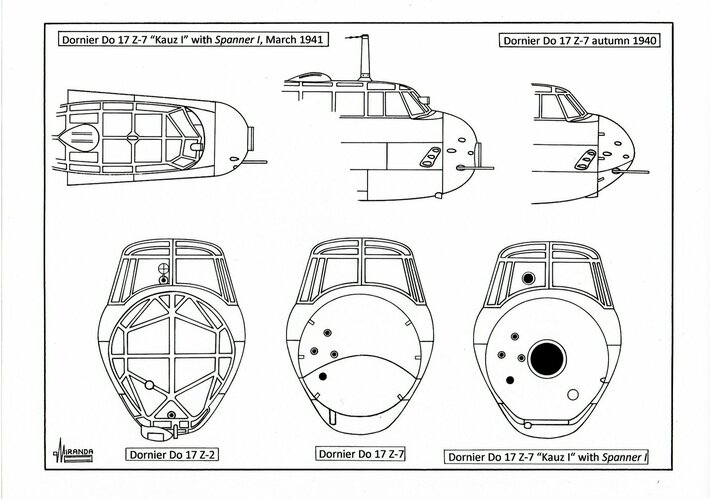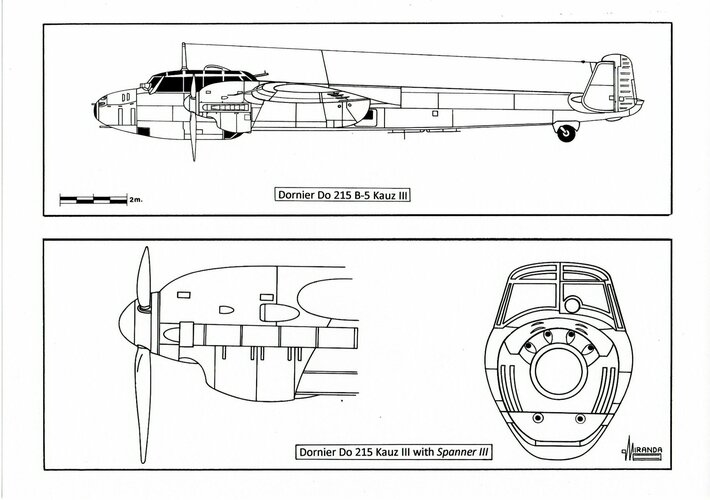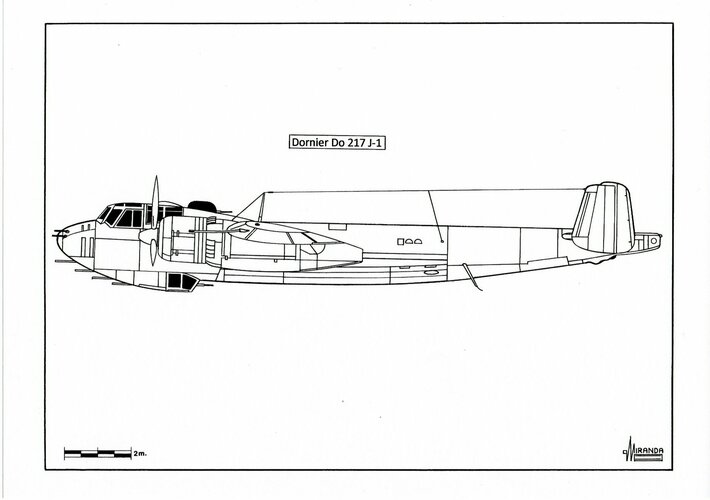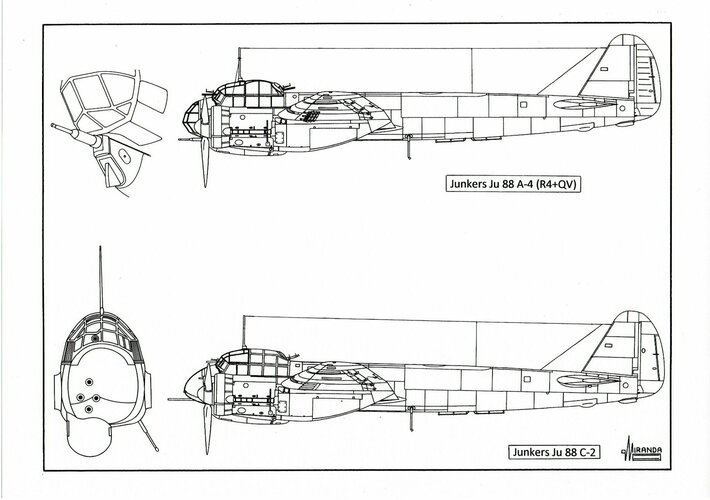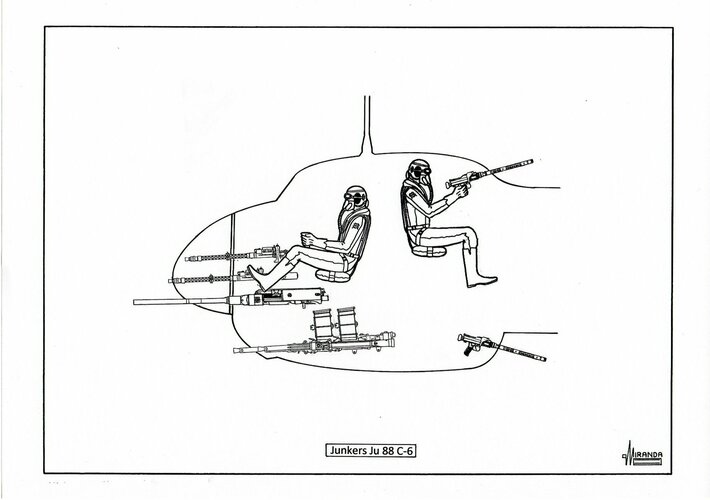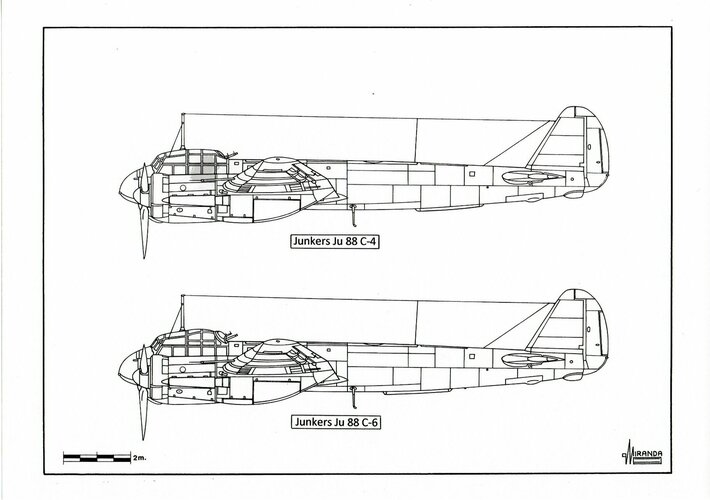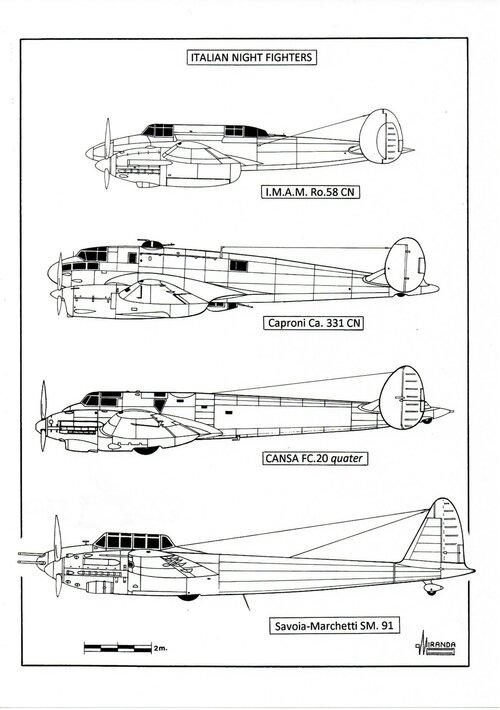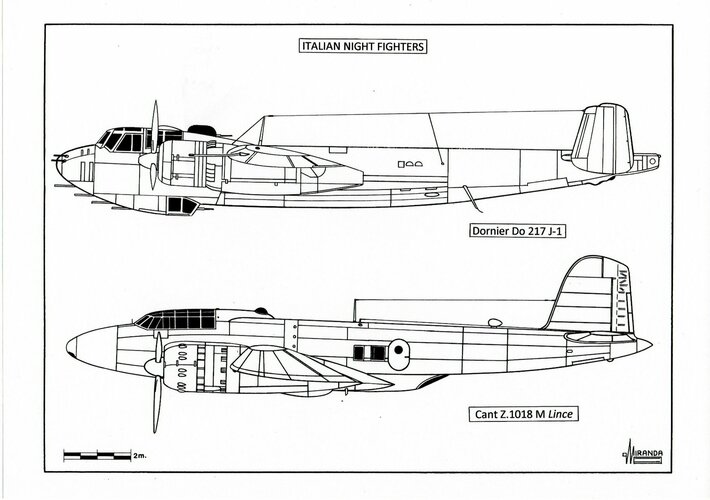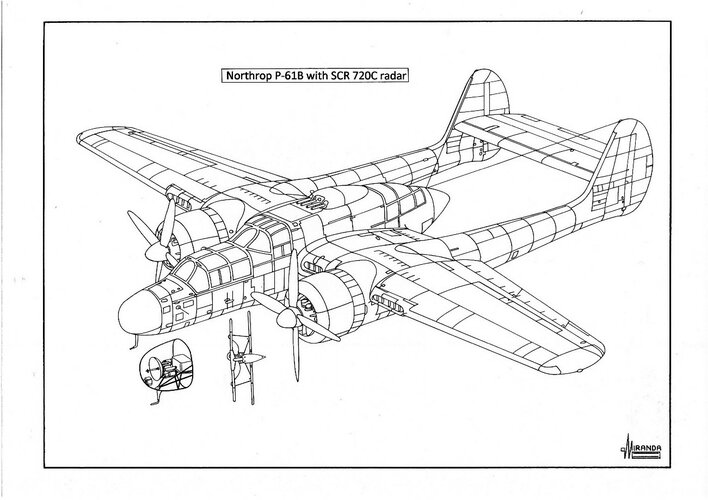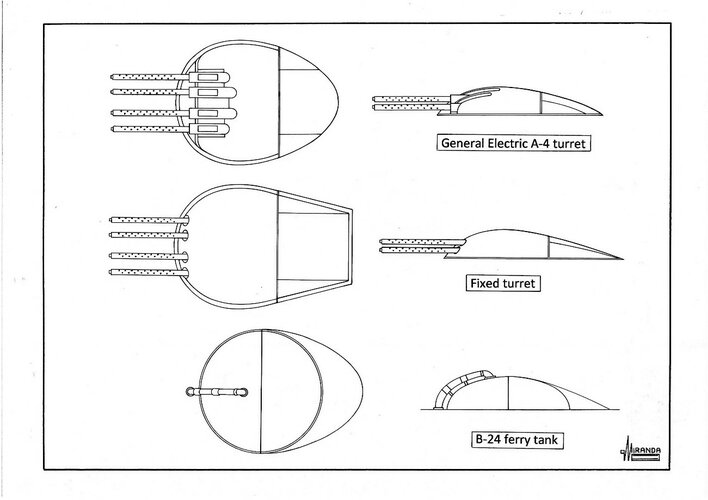Jack Northrop was in London during the Night Blitz of 1940 and noted British efforts to stop Luftwaffe night raids.
In November 1940, he decided to build a specially designed night fighter, based on the experience gained by the RAF.
The new fighter should be armed with 20-mm guns to overcome the armor of the German bombers during a stern attack but should also be equipped with a barbette dorsal for Defiant-style belly attacks.
It would be necessary to build a large and heavy aircraft, capable of carrying a large amount of fuel and electronic equipment with the best available AI radar, excellent communications equipment, and a radar altimeter, but also with the ability to turn very tightly at slow speeds, to elude the attack of enemy night fighters and to avoid losing radar contact while the target attempted to perform evasive maneuvers.
To achieve this, the future fighter would have to be powered by engines of at least 2,000 hp, capable of taking off under overload conditions and operating at maximum power during a prolonged chase.
Northrop hoped to start serial production within a year, but such a complicated project needed too long to become a reality and when the aircraft entered service forty months later, under the Black Widow P-61 codename, the Third Reich was practically defeated.
The first Black Widows sent to the European Theatre, on May 23, 1944, were thirty-five P-61 A-5 aircraft from the second production batch, equipped with R-2800-65W (water-methanol war emergency power) 2,250 hp. radial engines with PT-13G2 Stromberg injection carburettors and gear-driven, two-speed, two-stage superchargers, to hunt the Junkers Ju 188 German bombers at any altitude and fast enough to intercept the V-1 missiles.
The P-61 did not accelerate as rapidly as the P-38, although the heavy plane had dived without compressibility problems at 425 mph and 25,000 feet.
The Black Widow used two radars: an AI SCR-720A (with 10 cm wavelength, 150 Kw power output, 8 Km range and one parabolic antenna RC-286 with 70 cm of diameter and azimuth receiver antennas fitted on the fuselage sides) and one AN/APS-13 tail warning radar designed for night fighting in Europe. The main radar included SCR-695 IFF and beacon/homing device. The P-61 used flame-dampening stacks to eliminate exhaust glow, RC-36 interphone, RC-255A radio set, SCR-718 radio-altimeter, SCR-729 radio-navigation device, SCR-522 radio-set, MN-26 C radio-compass, FR12 A3 gyroscopic fire-control computer and was armed with 4 x 20-mm cannons.
In Airborne Intercept mode the SCR-720A had a range of five miles, the unit also could function as airborne beacon/homing device, navigational aid and IFF interrogator-responder.
The AI radar could be trained in both azimuth and elevation to allow tracking a single target and to allow scanning a larger section of the sky ahead of the fighter.
Black Widows of the A-5 series lacked external drop tanks and their range was only about 1,200 miles.
The paint scheme used in the A-5 series was Dull Olive Drab No. 21 (FS-34087/FS-24098) upper surfaces, Neutral Grey No. 23 (FS-36270/FS-36137) undersides, yellow serials and Black/White invasion stripes in wings and tail booms.
The A-10 series were painted overall in Glossy Jet Black, a paint developed by the Radiation Laboratory at the Massachusetts Institute of Technology (MIT) that reflected the searchlights beams, making the Black Widow practically invisible for 80 per cent of the time that the spotlight passed.
The Plexiglas radome was partially transparent and melted in the sun deforming and preventing the movement of the scanner-receiver antenna, spinning at 360 rpm. This radome was painted internally in reflective Gloss White (FS 17875) and lead paint was sprayed on the underside of the radome to eliminate ground clutter.
In later versions the Plexiglas was replaced by fiberglass painted Satin Black.
The invasion stripes of the A-10 series were painted only in the under surfaces.
In the autumn of 1944, all the Widows based at the Coulommiers and Chateaudun French airfields, were painted in Glossy Jet Black.
In November, the 422nd received one P-61 B-15 replacement aircraft, with GE A-4 dorsal barbette, painted in Glossy Jet Black, with Dull Red serials but without invasion stripes.
The new fighter had 8 inches extended nose, to accommodate the SCR-720C radar, and was fitted with one AN/APN-1 (low altitude) radio-altimeter.
The sophisticated Black Widow required a high maintenance work, but the replacement parts were scarce in the European Theatre, keeping 50 per cent planes serviceable was difficult and combat readiness suffered as a result.
To facilitate interceptions, the night fighter would to be airborne, orbiting and waiting, instead of taking off every time a bogey appeared on the radar screen. The 422nd NFS fighters used to perform four hours nighttime combat air patrols (CAP), flying at altitudes of 10,000-20,000 feet.
Throughout the duration of the CAP missions the crews preferred to use the oxygen masks, because combat experience showed an increase in night vision of 40 per cent with the continuous use of oxygen.
When the early warning radar detected a bogey, the night fighter was vectored by the GCI to be placed at the same altitude as the intruder. The P-61A-5 was equipped with an SCR-718 radio altimeter that allowed it to fly at the altitude indicated by the AN/TPS-1 ground radar.
Using their RC-255-A VHF radio and MN-26 C radio compass, the night fighter was directed by the GCI to a point several miles to the rear of the intruder.
Control radar guidance needed between fifteen and twenty-five minutes before the SCR-720 could detect the target at ranges between eight miles and 300 feet.
After detection, the fighter should increase its speed up to 372 mph to intercept the intruder before reaching the antiaircraft artillery zone, within ten miles of the GCI.
If the fighter approached too fast, it would overshoot the target. To avoid this, it should use its slotted flaps and perforated spoilers to decelerate rapidly to only 70 mph.
At 500 feet range the fighter made a hard as possible 180-degree turn, stood behind the target at a range of 2,000 feet and started adjustments to synchronize its speed with that of the target.
During combat, high-g aerobatics were forbidden because they affected the operation of radar tubes.
The IFF transmissions were not always reliable and visual contact was needed to ensure recognition of the target as required by the rules of engagement.
The pilot could use 5.8 power night binoculars connected to the gunsight, but sometimes visual contact was not possible because of clouds or rain.
Visual identification required to silhouette the target against the sky from below, at the very close range of 850-250 feet, depending on the weather and moonlight.
When the target was identified as a bandit (enemy plane) by its shape and size, the fighter had to position back behind to fire from the shortest possible distance. Four illuminated ‘tick marks’ on the gunsight allowed the pilot to determine the target range.
The Black Widow was armed with four 20-mm AN/M2 belly mounted cannons loaded with armor piercing, incendiary and high explosive shells but without tracers. It was discovered that tracers alerted the enemy and degraded the night vision of the pilot.
Sometimes the target also shot muzzle flashes and tracers could cause the US pilot to lose his night vision, which would force them to abort the attack. When they recovered the night vision, fifteen minutes later, the enemy would have already completed his mission.
The quadruple 0.50 caliber GE A-4 dorsal barbette was capable of a full 360-degree rotation in azimuth and 90-degree in elevation. It could be remotely controlled by the gunner using a Type N-6 gunsight and could be used to engage any target in the hemisphere, above and to the sides of the night fighter.
The turret could be locked forward to be fired by the pilot against targets ahead of the aircraft, using a Type L-1 gunsight.
In theory, the GE A-4 could also be used by the radar operator as a rear defensive armament. But it was of little practical use as the radar screens degraded his night vision. Its possible adversary would have been a Messerschmitt Bf 109 G-6 all-weather Moskitojäger, or a Focke-Wulf Fw 190 A-5 Wilde Sau night fighter crewed by specially selected pilots for their excellent night vision.
Early combat experience with the P-61 A-1 showed that the turret caused severe tail buffeting at high speeds, due to aerodynamic rough air flow when the turret was rotated.
Northrop decided to delete the dorsal barbette from production aircraft beginning with the thirty-eight aircraft. The removal of 1,600 pounds of weight increased the top speed by 20 mph.
When the buffeting problem had been lessened, a new turret with only two 0.50 caliber machine guns and GE2C FR12A3 gyroscopic fire control computer, was re-introduced in the P-61 B-11 series and the later model with four 0.50 caliber guns in the B-15 series.
The first Black Widows sent to the Pacific Theatre were seven P-61 A-1 night fighters, from the first production batch, equipped with 2,000 hp. supercharged engines.
Black Widows of the A-1series lacked external drop tanks, and their range was only about 1,200 miles. To make the long flight over the sea it was necessary to remove the dorsal barbettes and replace them with modified ex-B-24s bomb bay ferry tanks (with AN-F-48 100/130 octane fuel) that protruded above the fuselage.
The ferry tanks were replaced in Isley Field by fixed turrets, a field modification with four forward-firing M2 Browning heavy machine guns.
Early warning ground radars could pick the intruders at ranges of 150 miles. To confuse US defenses, Japanese bombers used chaff as they approached, thirty miles out of Saipan. This tactic had the effect of blocking the older SCR-270 (3-meter) and SCR-527 (1.5 meter) radar sets but it did not manage to cancel the detection capacity of the new SCR-615 (early warning) and AN/TPS-1 (height finder) ‘centimetric’ radars.
The Black Widow’s SCR-720 A (airborne interception) radar, operating in 10 cm wavelength, did not prove very vulnerable to chaff interference, but the Japanese signal intelligence services, monitoring US radio transmissions, were able to track the position of the American airplanes by their IFF emissions.
At other times the bogey mysteriously disappeared from ground control and airborne radar screens. It was a Japanese tactic using floatplanes that would land on water to confuse the US defenses.
In Saipan the P-61 A-1 proved too slow in climbing to operational altitudes and performed poorly above 25,000 feet.
The huge fighter lacked the speed advantage necessary to intercept the high-flying Betty bombers powered by supercharged engines.
The Black Widow used a system of flame dampening to reduce the visibility of the engine exhaust at night, but the Japanese did not use flame dampers because it reduced the power of the engines, and their exhaust could be seen up to 5,000 feet away.
Visual identification of the bogey was risky because sometimes bombers were escorted by Mitsubishi A6M5 Zeke fighters and the radar operator could not see them because their night vision was degraded by the radar screen glare.
In the Pacific Theatre, visual identification was especially complicated because most of the aircraft, used by both sides, were powered by radial engines and had very similar silhouettes.
In addition, the Japanese used several indigenous versions of American airplanes: Douglas DC-2 Tess, Douglas DC-3/Showa L2D Tabby, Lockheed Model 14 Thelma, Seversky A8V Dick and Vultee V-11G Millie.
In 1945, some of these models were used in suicide missions. The L2D carried airborne commandos of the Kaoru and Takachiho suicide units that carried out attacks against the B-29 bases in Guam, Tinian and Saipan.
In the fall of 1944, the 6th NFS received several P-61 A-5 fighters with R-2800-65 two-stage, two-speed supercharged engines and P-61A-10 with R-2800-65 W water injection and 2250 hp. war emergency power, that could climb to 20,000 feet in 8.5 minutes.
The new fighters arrived at Saipan without dorsal barbettes and painted in Glossy Jet Black.
The second squadron that received the Black Widows in May 1944 was the 419th NFS based in Buka Airfield-Bougainville.
These P-61 A-1 airplanes were shipped in crates, with the wings disassembled, and still retained their original General Electric A-4 remotely controlled, full-traverse, upper turrets.
In theory, the GE A-4 could also be used by the radar operator as a rear defensive armament, but it was of little practical use as the radar screens degraded his night vision. Its possible adversary would have been a Mitsubishi A6M5, or a Nakajima J1N1 night fighter crewed by specially selected pilots for their excellent night vision, enhanced with M-33-N Philopon methamphetamine.
The P-61 A-1 fighters of the 419th NFS were painted in Olive Drab/Neutral Grey with Gloss White radomes and three digit white numbers on the nose.
In August 1945, the 419th received several Glossy Jet Black P-61 B-1 night fighters fitted with SCR-720 C AI radar, AN/APS-13 tail warning radar, SCR-718 radio-altimeter, IFF/beacon locators, resin-impregnated fiberglass radomes in the extended nose and night-vision binoculars connected to the pilot’s rangefinder-gunsight Type LY-3N. The new fighters were delivered without turrets, and it was necessary to make a field modification with four (fixed) forward-firing M2 Browning heavy machine guns.
The P-61 A-10 fighters were delivered with water injection boosted engines but without turrets. They were modified with the installation of fixed gun barbettes in Hollandia.
At the end of 1944 the squadron received several P-61 B-15 fighters fitted with GE A-4 dorsal barbettes.
In June 1944, the 421st NFS received some P-61 A-1 armed with GE A-4 dorsal barbettes. These airplanes were delivered with Olive Drab/ Neutral Grey camouflage scheme and Satin Black nose radomes.
At the end of 1944 the 421st squadron received the new Glossy Jet Black P-61 B-10 fighters, fitted with four underwing hard points and four 310 US gallon drop tanks for 3,000 miles extended range.
The 547th NFS, based at Owi Airfield-New Guinea, did not receive its P-61 A-10 until September 1944.
In January 1945 the squadron was moved to Philippines and received some P-61 B-1 nigh fighters fitted with SCR-720C AI and SCR-718 tail warning radars but without gun turrets. These aircraft were field-modified as P-61 B-2 with two underwing hard points to carry external ordnance and night interdiction missions were carried out on Japanese airfields.
Between October 1944 and August 1945, the 548th NFS used five types of Black Widows: P-61 A-11, received in Hawaii; P-61 B-1, in Saipan; P-61 B-2 and B-6, in Iwo Jima and P-61 B-15 in Le Shima.
All aircraft were painted with the Glossy Jet Black scheme and armed with fixed forward gun turrets, except the B-15s ones which had been delivered with GE A-4 barbettes.
The squadron was used in CAP defense over the B-29s airfields on Saipan and Iwo Jima. It also provided night escort to the Superfortress against the Japanese night fighters and performed Heckler nighttime ground attack raids on the Japanese mainland.
The 549th NFS, based at Hickam Field-Hawaii, received its P-61 A-5 night fighters in October 1944 and was moved to East Field-Saipan in February 1945, to provide night coverage to the B-29s bases on Saipan and Guam.
In March, the squadron received some P-61 B-6 and B-15 Black Widows at Central Field-Iwo Jima. These fighters, fitted with four 300 US gallon drop tanks, flew long CAP missions over water and night interdiction missions over Eastern China and Chichi Jima Island.
The USAAF used two other Black Widows squadrons against the Japanese in the China-Burma-India (CBI) Theater.
All Black Widows operating at the CBI Theatre were of the A-10 model, without gun turrets.
During the war the Black Widows night fighters downed a total of 107 enemy airplanes and 18 flying bombs.
Northrop P-61 A-1 technical data
Wingspan: 66 ft. (20.11 m); length: 48.8 ft. (14.88 m); height: 14 ft. (4.31 m); wing area: 662 sq. ft. (61.49 sq. m); max weight: 27,700 lb. (12,565 kg); max speed: 372 mph (599 km/h); service ceiling: 34,000 ft. (10,363 m); range: 1,210 mi (1,974 km); power plant: two Pratt & Whitney R-2800-10 air-cooled radial engines each rated at 2,000 hp.; armament: 4x20 mm AN/M2 cannon.
Northrop P-61 A-5 technical data
Wingspan: 66 ft. (20.11 m); length: 48.9 ft. (14.90 m); height: 14 ft. (4.31 m); wing area: 662 sq. ft. (61.49 sq. m); max weight: 27,675 lb. (12,537 kg); max speed: 369 mph (594 km/h); service ceiling: 33,620 ft. (10,250 m); range: 1,150 mi (1,850 km); power plant: two Pratt & Whitney R-2800-65W (water-methanol injection) air-cooled radial engines each rated at 2,250 hp.; armament: 4x20 mm AN/M2 cannon.
Northrop P-61 A-10 technical data
Wingspan: 66 ft. (20.11 m); length: 48.9 ft. (14.90 m); height: 14 ft. (4.31 m); wing area: 662 sq. ft. (61.49 sq. m); max weight: 27,350 lb. (12,394 kg); max speed: 362 mph (583 km/h); service ceiling: 33,980 ft. (10,360 m); range: 1,206 mi (1,940 km); power plant: two Pratt & Whitney R-2800-65W (water-methanol injection) air-cooled radial engines each rated at 2,250 hp.; armament: 4x20 mm AN/M2 cannon.
Northrop P-61 B-15 technical data
Wingspan: 66 ft. (20.11 m); length: 49.5 ft. (15.11 m); height: 14 ft. (4.31 m); wing area: 662 sq. ft. (61.49 sq. m); max weight: 29,700 lb. (13,472 kg); max speed: 366 mph (589 km/h); service ceiling: 33,100 ft. (10,089 m); range: 3,000 mi (4,228 km); power plant: two Pratt & Whitney R-2800-65 air-cooled radial engines each rated at 2,250 hp.; armament: 4x20 mm AN/M2 cannon and 4x0.50-in, M2 Browning machine guns.

